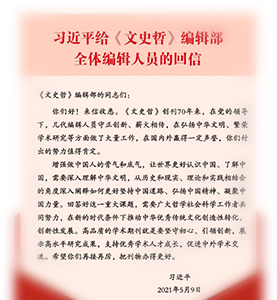国际比较视野下的新“三书”说
王海利 王 庆
摘要:“六书”理论是中国传统文字学分析汉字结构方式而总结出来的一套比较系统的理论,也是中国最早关于汉字构造的系统理论。通过对“六书”说、“三书”说进行详细的历史考察与评述,并结合西方学界文字学研究的相关理论和概念,将我国传统的文字学研究置于国际比较文字学视野下,能够深入地探讨文字创造背后的理念和方法,进而推动我国文字学研究的进展。鉴于我国现有的“六书”说、“三书”说,以及“西洋三书说”,多是对现有文字进行结构分析所得出的分析模式,忽略了对古人造字时所持的理念和方法的分析,故可以提出新“三书”说:一曰图绘。古人造字首先采用图绘,将实物的形象描绘出来,即绘物成文。二曰假借。通过借形表音创造文字。假借是人类文字发展史上的一次飞跃,一切文字的发展都经历过这个阶段。三曰后假借。有的文字体系沿着假借继续向前发展,逐渐淘汰图绘文字,发展成为表音节的音节文字和表音素的音素文字(二者合称拼音文字);汉字则采用了形符和声符的组合,从而创造出形声字。到秦汉以后,汉字体系发展成熟,成为一种既表形又表音的独特文字体系。至于文字在后假借阶段向哪个方向发展,则是由语言本身的特点以及历史的、文化的等多种因素决定的,并不存在优劣之别。
A New Theory of Sanshu of Writing: in the International Comparative Perspective
Wang Haili, Wang Qing
Abstract: The theory of Liushu is the Chinese traditional theory analyzing the structure of Chinese writing. It has been applied to the study of the Chinese writing since more than two thousand years ago. However, many scholars have found much vagueness and inconvenience in this traditional theory and have put forward several theories of Sanshu. This article gives a thorough survey on the theories of Liushu and Sanshu and some western theories and concepts on writing as well, aiming at exploring the ideas and methods in the invention of writing. The authors point out that the theories of Liushu, Sanshu and the Western Sanshu shared a similar analysis on the structure of writing, and ignored the ideas and methods in the invention of writing. With a specific consideration on the evolution of writing, the authors put forward a new theory of Sanshu, i.e. Picture, Rebus and Post-rebus. Picture: the ancient people applied picture-writing to draw the objects, following the sinuosity of their physical forms. But there are many words which cannot be easily put in drawing. Then comes the second principle of writing, Rebus, which borrows the sound of the existed scripts to represent or compound other words. The Rebus is the revolution of writing, and every writing system has undergone this stage. The Post-rebus is the third stage of writing. At this stage, different writing takes the different ways in further development. Most writing systems have employed the rebus principle further and given up the picture-writing, and eventually developed into the syllabic writing and the alphabetic writing. The Chinese writing has combined the ideographs and phonograms to invent Xingsheng (semanto-phonetic compounds), and eventually evolved into a matured writing system. The orientation of writing is determined by the characteristic of the language, as well as the historical, cultural and some other factors, with neither one being superior or recessive to the other.


